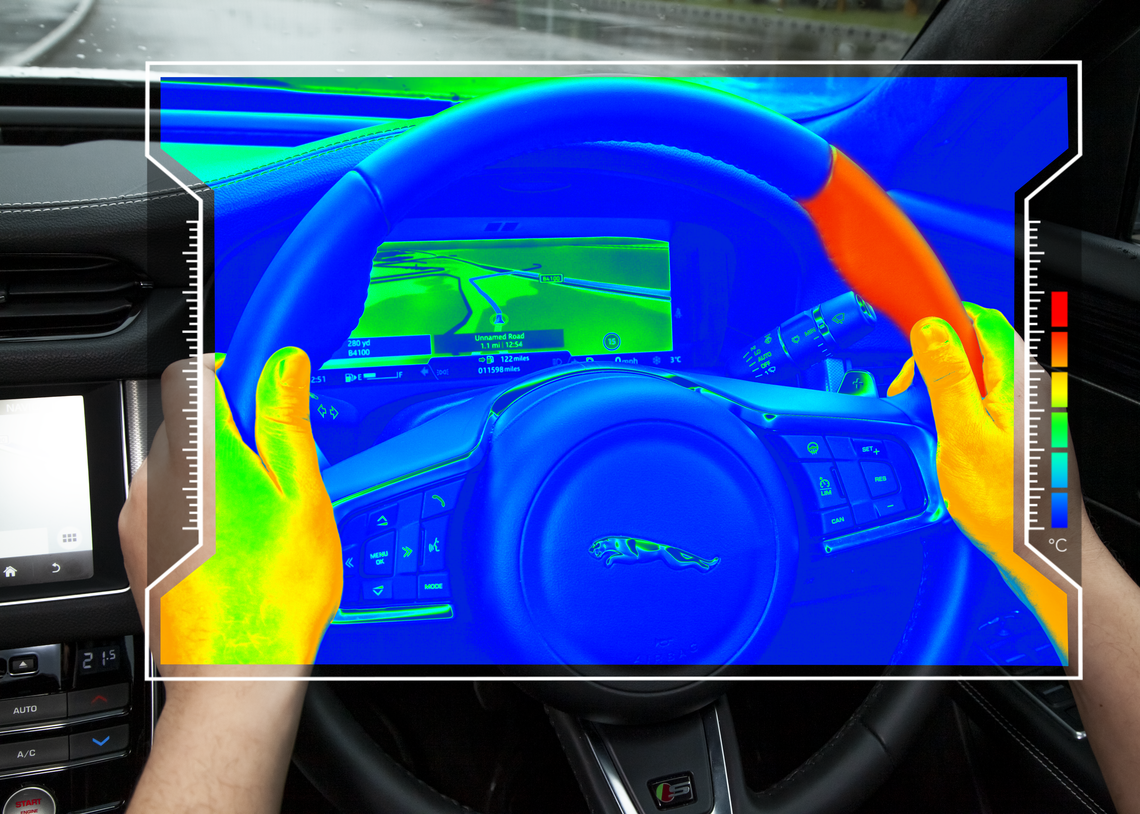A steering wheel has been developed by Jaguar Land Rover to help keep drivers’ eyes on the road by using heat to indicate when to turn left or right.
The research, in partnership with Glasgow University, has created a sensory steering wheel, parts of which can be quickly heated and cooled to inform drivers where to turn, when to change lane or to warn of an approaching junction. This could be particularly useful when visibility is reduced through poor weather or the layout of the road, according to the company.
The technology has also been applied to the gear-shift paddles to indicate when hand over from the driver to autonomous control in future self-driving vehicles is complete.
Driver distraction is a major contributor to road accidents around the world and accounts for 10 percent of all fatal crashes in the USA alone. Jaguar Land Rover’s research suggests thermal cues could be a way to keep drivers fully focused on the road.
The cues work on both sides of the steering wheel, indicating the direction to turn by rapidly warming or cooling one side. For comfort a driver could adjust the range of temperature change.
Studies have shown temperature-based instructions could also be used for non-urgent notifications, where vibrations could be deemed unnecessarily attention grabbing, for example as a warning when fuel is running low, or for upcoming events, such as points of interest. Thermal cues can also be used where audio feedback would be deemed too disruptive to cabin conversations or media playback.
The Jaguar Land Rover-funded research is part of a PhD study undertaken by Patrizia Di Campli San Vito at Glasgow University as part of its Glasgow Interactive Systems Research Section (GIST).
“Safety is a number one priority for Jaguar Land Rover and we are committed to continuously improving our vehicles with the latest technological developments as well as preparing the business for a self-driving future,” said Alexandros Mouzakitis, electrical research senior manager for Jaguar Land Rover. “The sensory steering wheel is all part of this vision, with thermal cues able to reduce the amount of time drivers have to take their eyes off the road.
“Research has shown people readily understand the heating and cooling dynamics to denote directions and the subtlety of temperature change can be perfect for certain feedback that doesn’t require a more intrusive audio or vibration-based cue.”
